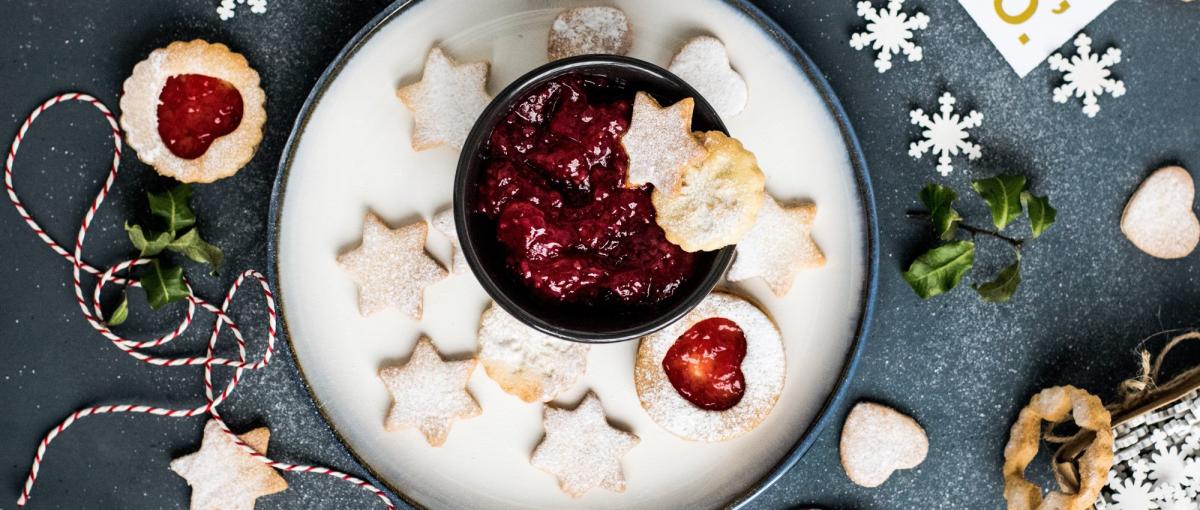Managing diabetes during the holidays
5 tips to help enjoy one of the most sugary times of the year

December 19, 2019
By Alastair Lillico, Communications Web Coordinator, Covenant Health
'Tis the season of sweets and treats. Finding a healthy balance during the holidays isn’t an easy feat and it’s even more challenging for those with diabetes.
Whether it’s going out with friends, visiting with family or heading into the office and finding another tray of goodies, those with diabetes need to carefully navigate the festivities, keeping in mind what they’re eating and when, and being sure to monitor their blood sugar. Planning is key to being able to partake in the holiday fun, says Christiana Dizon, registered dietitian at Grey Nuns Community Hospital.
“There is a cultural as well as a nutritional aspect with food,” says Christiana. “It’s often a central part of any gathering. With a bit of time, and planning, people with diabetes can definitely enjoy the holidays. They just need to be a little more prepared.”
Christiana offers some tips to help people with diabetes enjoy the holiday season.
Stick with your schedule
During the holidays we can be thrown off our regular routines with an increase in parties or family gatherings. It’s important to be aware of your meal times and what you’ll eat to make sure you maintain healthy blood sugar levels, says Christiana.
Track your plans: Use a calendar to plan food and drinks at different events.
Stick with your workout schedule: Staying active during the holidays is one of the best ways to maintain your weight. Even something as simple as going for a 30-minute walk can help lower your blood sugar. To keep yourself motivated, try to schedule your workouts with friends.
Eating at restaurants
Eating at a restaurant requires more awareness and planning.
Check out the menu: Many restaurants post their menus online. See if you can plan ahead for what will work for your needs.
Keep portion sizes in check: Restaurants tend to serve larger portions—sometimes double the ideal serving size as indicated by Canada's Food Guide. Try to eat the same size portion as you would at home and take the rest for leftovers. In general, a healthy meal would see half your plate filled with vegetables, a quarter of your plate dedicated to protein and a quarter of your plate reserved for a high-fibre grain product.
Limit the fat: Try to avoid foods that are high in salt or fat, such as french fries, sausages, wings, or deep-fried vegetables. Enjoy small amounts of cheese.
Opt for lighter fare: Order salads, vegetables that have minimal sauces or whole grain items such as a whole wheat bun or brown rice. If you order a sandwich, make sure it doesn’t have several portions of meat. Look for leaner proteins such as lentils, fish or poultry, and try to choose versions that are steamed or baked rather than battered and fried.
Drink wisely: Sugary soda, juice or a milkshake can add a lot of calories to your meal. Try to go with an option that has less fat and sugar, such as water or unsweetened tea or coffee.
Dinner parties
Hosts want guests to enjoy themselves. It’s good to phone ahead to find out what food is being served and explain that you have diabetes so they understand your need to prepare, says Christiana.
“Don’t be afraid to ask wherever you’re going, when a meal is being served and what is being served so that you can plan accordingly.”
Plan for potlucks: Bring a vegetable dish or hors d’oeuvres so you know there will be something for you. Vegetables tend to have a minimal presence at a party so it’s often a good choice to bring some. We often think of sweets as raising blood sugar, but it’s also important to watch the portion size of starchy foods such as buns, stuffing, potatoes, pasta and rice.
Be strategic about what you choose. Survey the food options before picking your items. Pick the most important carbohydrate choice, such as stuffing because you love it and rarely get to eat it, to fill one quarter of your plate.
Eat slowly: There’s often a lot of food available at holiday parties, and by eating slower you’ll be more in tune with your hunger signals and less likely to overindulge. Putting everything on a plate at once, rather than nibbling, is one way to be mindful of how much you’re eating.
Drink alcohol in moderation: Look to have one drink of alcohol per day and accompany it with some food. Some drinks, including beer and sugary beverages, initially raise blood sugar, but consuming alcohol increases the risk of lower blood sugars, so it’s important for those with diabetes to monitor their levels.
At work
This is the time of year when people want to create a festive atmosphere at work, which usually includes cookies, chocolates and candies.
Keep snacks on hand: This will help minimize trips to the treats table. Consider bringing in a piece of fruit, a high-fibre snack or even a protein source such as cheese or yogurt. This will help maintain blood sugar levels.
Stay well hydrated: It’s important to make sure you’re drinking lots of water, which can reduce snacking urges, says Christiana.
Be kind to yourself
This time of year can be challenging. Whether individuals have diabetes or not, succumbing to temptation happens on occasion. Those with diabetes need to be aware of the impact this has on their blood sugar levels, but it doesn’t mean they can’t enjoy the holidays, says Christiana.